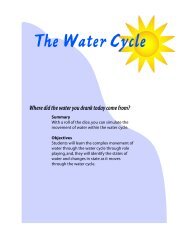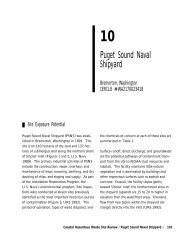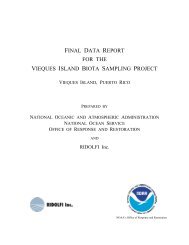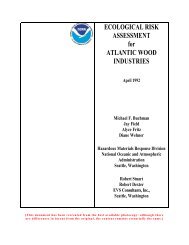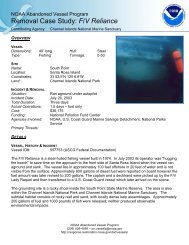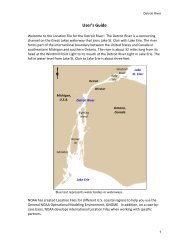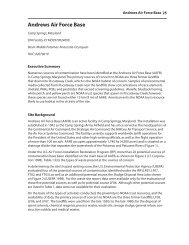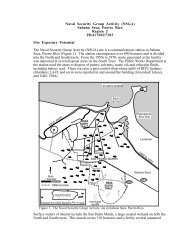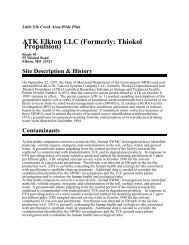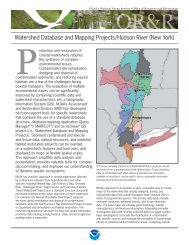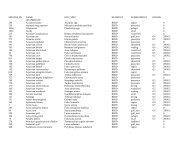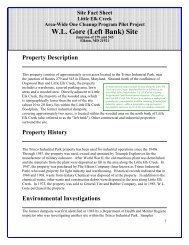The Coastal Resource Coordinator's Bioassessment Manual
The Coastal Resource Coordinator's Bioassessment Manual
The Coastal Resource Coordinator's Bioassessment Manual
You also want an ePaper? Increase the reach of your titles
YUMPU automatically turns print PDFs into web optimized ePapers that Google loves.
HAZMAT 93-1–Toxicity Tests<br />
response (the endpoint) in the species used for the test. Positive control samples help<br />
establish a dose-response relationship for the test species. <strong>The</strong>se tests demonstrate the<br />
responsiveness of the test organisms for the endpoint of the test.<br />
EC 50 and LC 50<br />
Toxicologists often report the toxicity of a substance as either an EC 50 or an LC 50 value. An<br />
EC 50 is the concentration of a particular chemical associated with a sublethal response in 50<br />
percent of the test organisms; EC stands for effective concentration. An LC 50 is the<br />
concentration associated with death of 50 percent of test organisms; LC stands for lethal<br />
concentration. <strong>The</strong> results of toxicity tests on environmental samples are rarely reported as<br />
either EC 50 or LC 50 values because the samples consist of a mixture of chemicals, often<br />
unknown, and the toxicity cannot be associated with one specific chemical. However, if<br />
tests are run on a series of dilutions of the test sample, then the results can be reported as<br />
either an EC 50 or an LC 50 with regard to the sample dilution, not the chemical<br />
concentrations in the sample. For example, if toxicity tests were performed on a dilution<br />
series of a contaminated water sample and 50 percent of the test organisms were killed by<br />
the solution containing 40 percent test sample, the LC 50 would be 40 percent.<br />
Other Factors Influencing Toxicity Tests<br />
In all experimental measurements, and especially those involving living organisms, it is<br />
important to identify outside factors that may interfere with a correct interpretation of the<br />
test results. <strong>The</strong> effects of unknown co-contaminants, impurities, and degradation products<br />
(such as ammonia or sulfides) in the test material can further complicate interpretation of<br />
the toxicity of the test material. Another factor that can confuse interpretation of toxicity<br />
test results is seasonal variation in the test organism's sensitivity to the substances being<br />
tested. <strong>The</strong> physical characteristics of the sample matrix can influence toxicity test results<br />
both by controlling the bioavailability of the contaminants and by directly affecting the test<br />
organisms. <strong>The</strong> latter is of special concern when the test organisms do not occur naturally<br />
in the area from which the test samples were taken. In the case of water these physical<br />
characteristics include pH, salinity, and temperature, while in sediments grain size, total<br />
organic carbon (TOC), and water content must also be considered. Very high concentrations<br />
of fines in apparently uncontaminated sediments have been found to be toxic to the the<br />
amphipod, Rhepoxynius abronius, who prefers fine sandy sediments (DeWitt et al., 1988).<br />
<strong>The</strong> toxicity was believed to be due to either the fine grain size, the high sediment water<br />
3-13 August 1997



